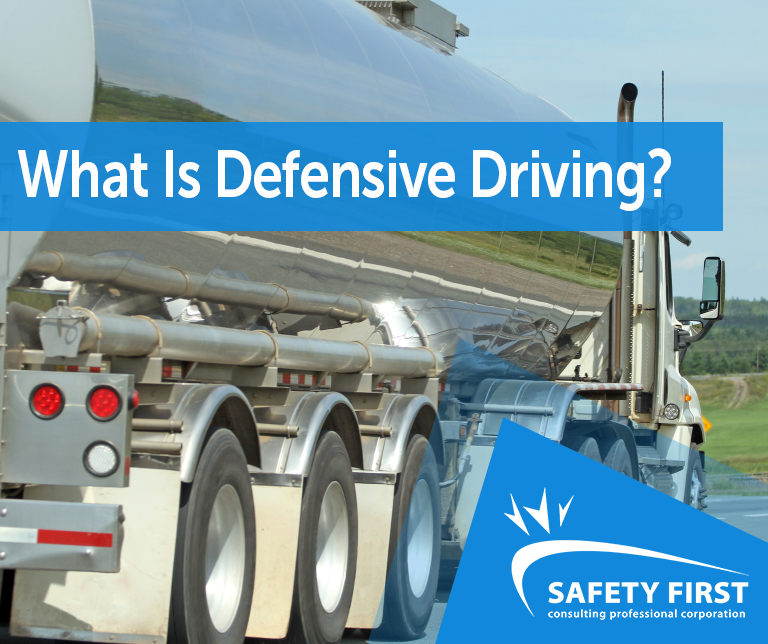
Defensive Driving
Many workers are frequently exposed to work-related injuries due to car accidents. Defensive driving should be taught to all employees regardless of their line of work. Although many employees drive a vehicle there are some industries that are more likely than others to require training including oil and gas, shipping, warehousing, waste management, hospitality and tourism and security.

What Is Defensive Driving?
Defensive driving describes being aware of your surroundings when in a vehicle and ensuring that all potential hazards or dangerous situations are not overlooked. Often when in an operating vehicle, such as a skid-steer loader, workers will ignore what’s around them and focus on their work at hand. However, those not operating the vehicle are still at risk for potential injury.
Distracted Driving
There are 3 types of distracted driving:
- Visual
- Manual
- Cognitive
Examples of distracted driving may include talking on the cellphone, aggressively driving, or getting for items that are out of reach.
Tips For Minimizing Potential Hazards While Driving
There are various techniques workers can use to help minimize risk of injury while operating moving vehicles.
First, it is important to eliminate all potential distractions or disturbances while on route. Distractions such as using a cellphone, eating, tuning your radio, are all potential hazards to workers both during and after work hours.
Second deals with communication. It is extremely important when operating a moving vehicle to communicate your whereabouts with other workers that you know are within close proximity to your vehicle. For example, when working with a skid-steer loader, you should know where all other workers are, as well as any potential physical hazards surrounding the vehicle.
Using hand signals is also helpful in deterring injuries while on site. In the event the worker is unable to see behind them, or their surroundings, using a traffic control person to help navigate the driver is important. Traffic control person(s) can use hand signals to avoid collision between other workers and the environment.
The third tip is attention. Drivers should always pay attention while on route, ensuring that not only themselves but other people are kept at a safe distance between the car and prevented from potentially injuring themselves. By eliminating distractions as well as correcting any unsafe driving practices helps to ensure drivers have taken the necessary precautions to ensure the safety of others.
In response to distracted driving, controls can reduce the number of potential hazards drivers are exposed to. This may include eliminating the distraction, identifying the hazard(s), such as storing your phone away during the duration of your drive.
It is also necessary that workers follow all regulatory speed limits as well as prepare for getting behind the wheel. This may include managing the drivers speed according to road conditions or changing the tires of your vehicle from summer to winter/all season.

